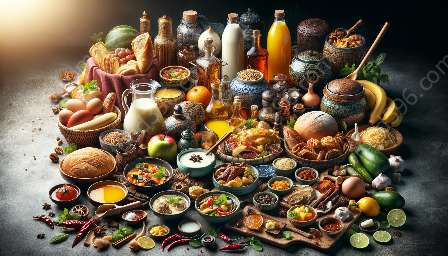Brazilian cuisine is a tantalizing fusion of flavors and culinary traditions that reflects the country's diverse cultural and historical influences. From delectable street foods to elaborate feijoada, the national dish, the cuisine of Brazil offers a colorful tapestry of regional variations and a deep connection to the country's food culture and history.
Regional Variations in Food Culture
The vast and varied landscape of Brazil has given rise to a rich tapestry of regional food cultures, each with its own unique flavors and ingredients. In the Amazon Rainforest, indigenous communities have preserved culinary traditions that include exotic fruits, fish, and game meats. Moving south, the influence of European immigrants is evident in the rich, hearty dishes of the Pampas and the delicate pastries of the southern states. In the northeast, the African heritage is celebrated through vibrant dishes flavored with coconut milk, palm oil, and spices brought to Brazil during the colonial era.
Food Culture and History
The history of Brazilian cuisine is a colorful mosaic of indigenous, African, Portuguese, and immigrant influences. The indigenous people of Brazil cultivated a variety of crops, such as cassava, corn, and fruits, which continue to be staples in Brazilian cooking. With the arrival of the Portuguese colonizers, new ingredients like sugar, coffee, and various spices were introduced, shaping the culinary landscape of Brazil.
The forced migration of African slaves brought to Brazil the culinary traditions of their homelands, leading to the development of dishes such as acarajé and moqueca. In more recent history, waves of immigration from Italy, Japan, and the Middle East have further enriched Brazilian cuisine, contributing new ingredients, flavors, and cooking techniques.
Exploring Traditional Brazilian Dishes
Feijoada, a bean and meat stew, is often considered the national dish of Brazil, symbolizing the country's diverse cultural heritage. The dish, which originated from the culinary traditions of the enslaved population, is a celebration of the use of pork, black beans, and a variety of smoked meats.
The Brazilian churrasco, or barbecue, is a testament to the influence of the gaucho traditions of the Pampas region, featuring an array of succulent meats grilled over open flames. Coxinha, a popular street food, consists of shredded chicken encased in dough, shaped into a teardrop, and deep-fried to golden perfection. The soft and creamy Brazilian cheese bread, known as pão de queijo, is a favorite snack that reflects the country's dairy and agricultural traditions.
From the vibrant street markets of Salvador to the sizzling churrascarias of Rio de Janeiro, Brazilian cuisine offers a feast for the senses, honoring the diverse influences and cultural history that have shaped the country's culinary heritage.

